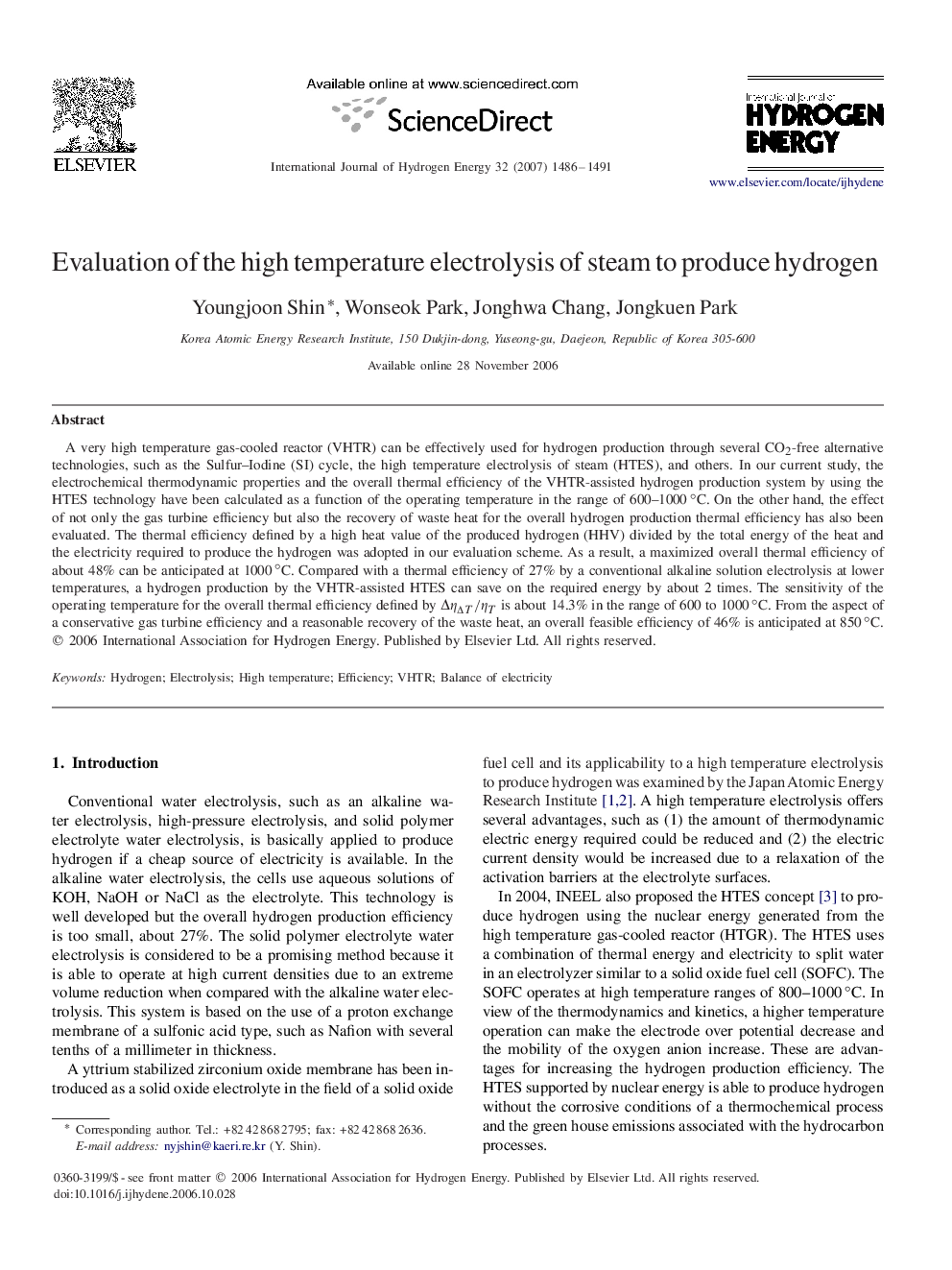| Article ID | Journal | Published Year | Pages | File Type |
|---|---|---|---|---|
| 1280491 | International Journal of Hydrogen Energy | 2007 | 6 Pages |
A very high temperature gas-cooled reactor (VHTR) can be effectively used for hydrogen production through several CO2CO2-free alternative technologies, such as the Sulfur–Iodine (SI) cycle, the high temperature electrolysis of steam (HTES), and others. In our current study, the electrochemical thermodynamic properties and the overall thermal efficiency of the VHTR-assisted hydrogen production system by using the HTES technology have been calculated as a function of the operating temperature in the range of 600–1000∘C. On the other hand, the effect of not only the gas turbine efficiency but also the recovery of waste heat for the overall hydrogen production thermal efficiency has also been evaluated. The thermal efficiency defined by a high heat value of the produced hydrogen (HHV) divided by the total energy of the heat and the electricity required to produce the hydrogen was adopted in our evaluation scheme. As a result, a maximized overall thermal efficiency of about 48% can be anticipated at 1000∘C. Compared with a thermal efficiency of 27% by a conventional alkaline solution electrolysis at lower temperatures, a hydrogen production by the VHTR-assisted HTES can save on the required energy by about 2 times. The sensitivity of the operating temperature for the overall thermal efficiency defined by ΔηΔT/ηTΔηΔT/ηT is about 14.3% in the range of 600 to 1000∘C. From the aspect of a conservative gas turbine efficiency and a reasonable recovery of the waste heat, an overall feasible efficiency of 46% is anticipated at 850∘C.
